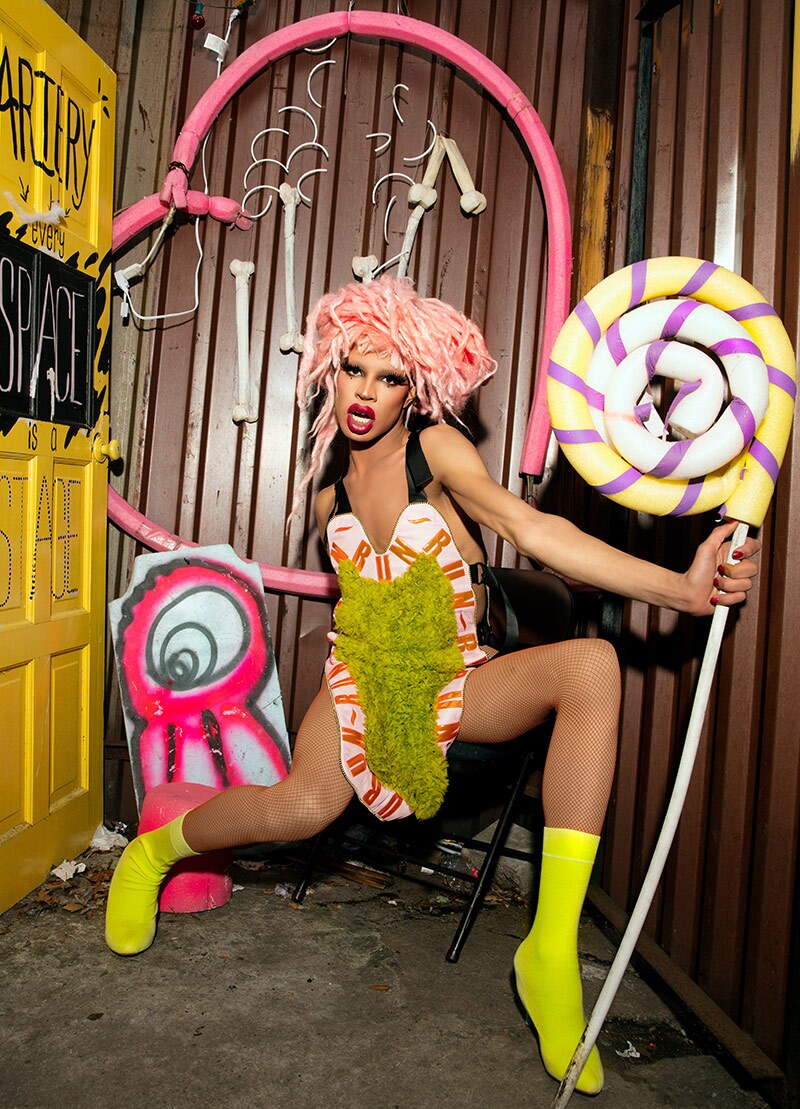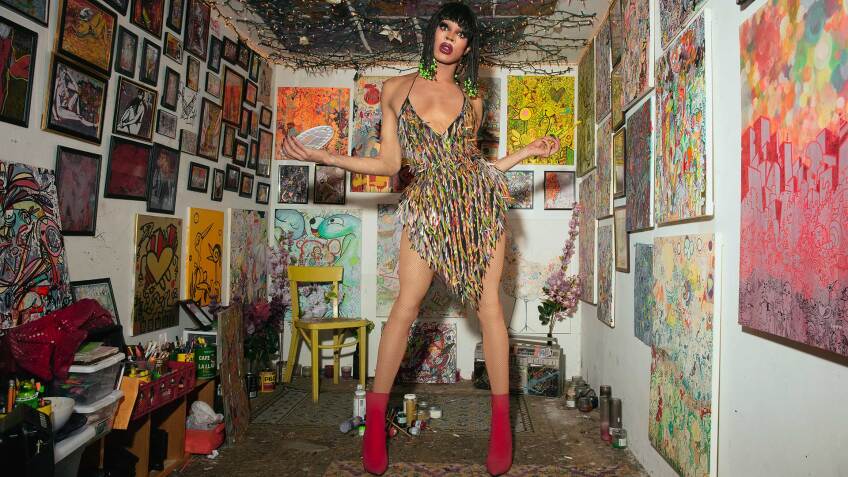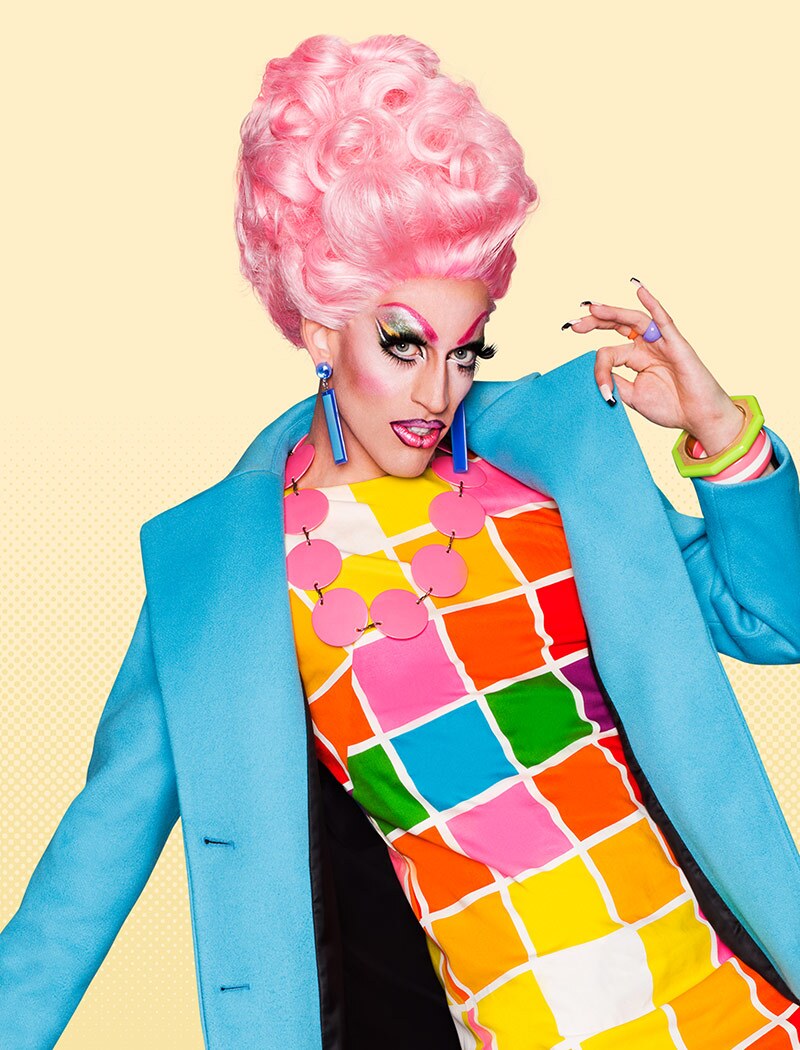How Drag Became a Modern Pop Art Movement

Editor's note: This article has been updated to further emphasize the author's point of view that drag has always been an art form, and one that has blossomed into performance art appreciated by a wider, mainstream audience base.
From fringe players, drag queens have become an embodiment of Warholian pop art, bringing together and twisting iconic media and personalities in a full-body form of self-expression, while achieving their 15 minutes (or longer) of fame.
Like the entire art and entertainment scene of Los Angeles, drag culture is undergoing its own forced pivot in the time of COVID-19. This summer, Voss Events launched Drive n’ Dragso that people could experience live drag shows from the safety of their cars, convertibles or beach chairs in lieu of now-closed bars and venues. Inspired by the drive-in movie format, Drive n’ Drag allows queens to perform live, summer-blockbuster-inspired tributes to “Ghostbusters,” “Maleficent,” and more, to the delight of socially distant crowds.
Originally scheduled for a mid-July weekend in the DTLA arts district, sold out tickets forced the event to expand to the larger Rose Bowl, and the L.A. weekend has been rescheduled for July 31 to August 2. Drive n’ Drag is going to feature many of the queens who rose to fame on RuPaul’s Drag Race (RPDR), like Monét X Change, Kameron Michaels, Gigi Goode, and Plastique Tiara, to name a few of the dozen performers. So how did this fringe art form become a cultural force to be reckoned with?
The Rise of the Drag Industrial Complex
Drag queens have undergone quite an evolution in status and recognition in my relatively short adult life. The first time I ever saw drag in person was in 2003 at a small-town gay bar in central Illinois. A few years later, when I was actually old enough to legally enter an establishment, I met drag queens hosting events and partying it up in Chicago (one of my proudest college memories was being given a haircut by a queen before she moved to Seattle and became famous and to this day, it is the best haircut I have ever had). By the time I moved to L.A. in 2007, I had met performers who were starting to come up through the ranks as professional queens, and the competitive field was growing larger for them.
Drag as we know it started as a kind of fringe art form or hobby within the larger LGBTQ community, but in recent years, it has evolved into a cultural force for the masses, enjoyed by millions and millions of people in mainstream audiences around the world. Drag has always been an artform that transcends and combines performance art, theater, music, fashion, costume, set design, and of course, makeup and wigs with oneself as the canvas, but now, queens have become an embodiment of Warholian pop art, including attaining mass media fame. A growing number of drag performers, like Yvie Oddly and Acid Betty, are also classically trained or avant-garde artists themselves. Their skill sets and sensibilities set them apart as entertainers, while also expanding what being a drag queen can mean.
Click through below to see more of Yvie Oddly's art.








It is utterly impossible to talk about modern drag without centering “RuPaul’s Drag Race” in that conversation. “Drag Race” began as a niche reality competition on Logo TV and ascended to a mainstream, Emmy-winning flagship for VH1, with a primetime Friday time slot. The show has gathered admirers around the world as passionate as any hardcore sports fanatics, expanded into a multi-national format, and inspired a new generation of queens to tuck and take the stage. Economy-wise, RuPaul spawned a highly-lucrative performance circuit and even launched an annual convention (DragCon) that boasts over 50,000 attendees each year. For comparison, San Diego ComicCon usually has 100,000 people through its weekend.
In 2018, the New York Times recognized that we have officially (kind of) entered the golden age of drag. Regardless of your stance on this label, in this era of corporate-backed pop culture tentpoles, RuPaul has emerged as the scion of drag as an industry, very similar to Marvel’s synonymy with superheroes (sorry DC). And to give another indicator of how popular and mainstream drag is right now, Masterclass recently unveiled a new program on its platform by RuPaul himself.

The growing prominence of drag has even led to its reevaluation in the art world. In February of this year, Queen of Angels, “L.A.’s only brick n’ mortar boutique for drag queens,” had a pop-up at the second edition of Frieze Los Angeles. In August 2018, the high profile Hayward Gallery in London celebrated the subversive history of drag as an art form with the exhibit, “DRAG: Self-portraits and Body Politics.”
A Brief History of Drag
“Before ‘RuPaul’s Drag Race’ became what it is today, when asked about what kind of work I did for a living, I would describe my job as producing variety shows,” says Jon Norris, a senior producer at Voss Events. “It was always easier to say than ‘I produce, promote and manage shows with drag queens from TV.’ But if I were asked to explain drag to someone, I would say that it is variety! Drag is a blend of all things celebrity, music, pop culture, current events and comedy, and I think that may be the reason why everyone can relate to a certain drag queen’s persona.”
At its origin, drag was a tool for Greek theaters and Shakespearean productions alike to depict female characters on stage, where women were not allowed. In more modern times, it evolved into a vehicle for LGBTQ self-expression and became a staple of every city’s gay scene. Highlighting the performative aspects of gender traits that we are indoctrinated into us by society, drag can make statements about the human condition that are just as insightful as artworks hanging in a museum.
Drag as Modern Pop Art
Hailing from Denver, Yvie Oddly rose to international fame on the 11th season of “RuPaul’s Drag Race,” and eventually won the competition. But she had been a visual artist for her entire life, before ever doing drag and donning a stage name.
“I’ve been really passionate about the arts for as long as I can remember,” Yvie tells KCET. “Growing up, I was constantly drawing, singing and dancing. When I was ten, I auditioned for Denver School of the Arts, where I spent the next six years as a visual arts major learning everything I needed to know about surviving in the world as a fine artist. But I was restless and had always wanted to explore more than studio art, so my senior year I transferred to a public school where I was able to flourish in acting, singing and dancing, in addition to drawing.”
Click through below to see more of Acid Betty's art.






A performer at heart, perhaps Yvie was destined for stages and spotlights. She says, “I believe my art background is what drew me into creatively exploring conceptual drag as much as (if not more than) ‘female illusion.’”
As her name suggests, the Yvie Oddly character’s defining trait is “weird,” which often translates to high-level inventiveness and stunningly fabulous displays of creativity. Her initial entrance into RPDR’s iconic werk-room was with a toy remote-controlled race car driving in with the feather boa-like tail of her dress. This was followed by iconic looks throughout the season that no one had ever displayed before, such as a colorful mime and even a dinosaur.
“First and foremost, my training gave me the tools to think both creatively and critically, which allows me to treat every aspect of my drag like an art piece and refine it to express my specific point of view,” Oddly says. “Plus, it was just this natural progression. Most of the subject matter of my fine art career revolved around strong feminine characters who blurred the line of gender, and I became obsessed with performance art after learning of its existence. Everything just kind of led me here.”

The demanding travel and performance schedule doesn’t give Oddly a lot of time in the studio these days, but, unique to her website and drag persona, she has a full page dedicated to her art.
Acid Betty, another artist-performer in Drive n’ Drag, takes a more commercial sensibility when it comes to art and creativity. With a background in big-picture design and art direction, it was more natural for her to create a brand called Haus of Acid (not completely dissimilar to the Haus of Gaga). Recently, she unveiled a series of genuinely stunning face masks, elevating the much needed PPE supplies to bonafide fashion statements.
A lot of Acid’s creativity is poured into making showstopping accessories and art pieces to accompany her on stage, similar to the way the heavily Warhol-influenced Gaga did in the start of her career.
But still, she says, “The artist, person and Acid is all part of the same being. [But] they fight with each other all the time. One doesn’t get enough attention, the other takes up every inch of closet and storage space. Their egos clash all the time, and that’s just how it is. It took me many years to come to that realization. I had tattooed Acid Betty onto my arm years ago knowing she would never go away because she is one facet of the entire crystal that is me. When I stopped working 9 to 5, Acid Betty became my full-time job. Then [my drag persona] created a lot of attention for my video and design work so that picked up again. They feed each other and hate each other all at the same time.”
Whereas Yvie might in some ways be embodying the intense female forms she began illustrating, Acid’s professional creative sensibilities are aimed more at production to elevate her performances. “I feel like I am always trying to push my own boundaries and sense of Acid and having my hands in all kinds of the artistic production from the video, sound, costume it all tends to bleed and feed each other,” says the queen. “I have gone from early years computer programming 3D to animation and video in 3D to hand sculpting and creating all the costumes I wear, which is 3D. So I have found that I can see and feel a full fantasy a lot easier and faster than most, which from the outside probably looks like a scene from ‘Rain Man’.”
You can see Yvie Oddly, Acid Betty, and nearly a dozen other queens from “RuPaul’s Drag Race” in a full weekend of shows, from July 31 to August 2.
Top Image: Yvie Oddly | Courtesy of Voss Events


